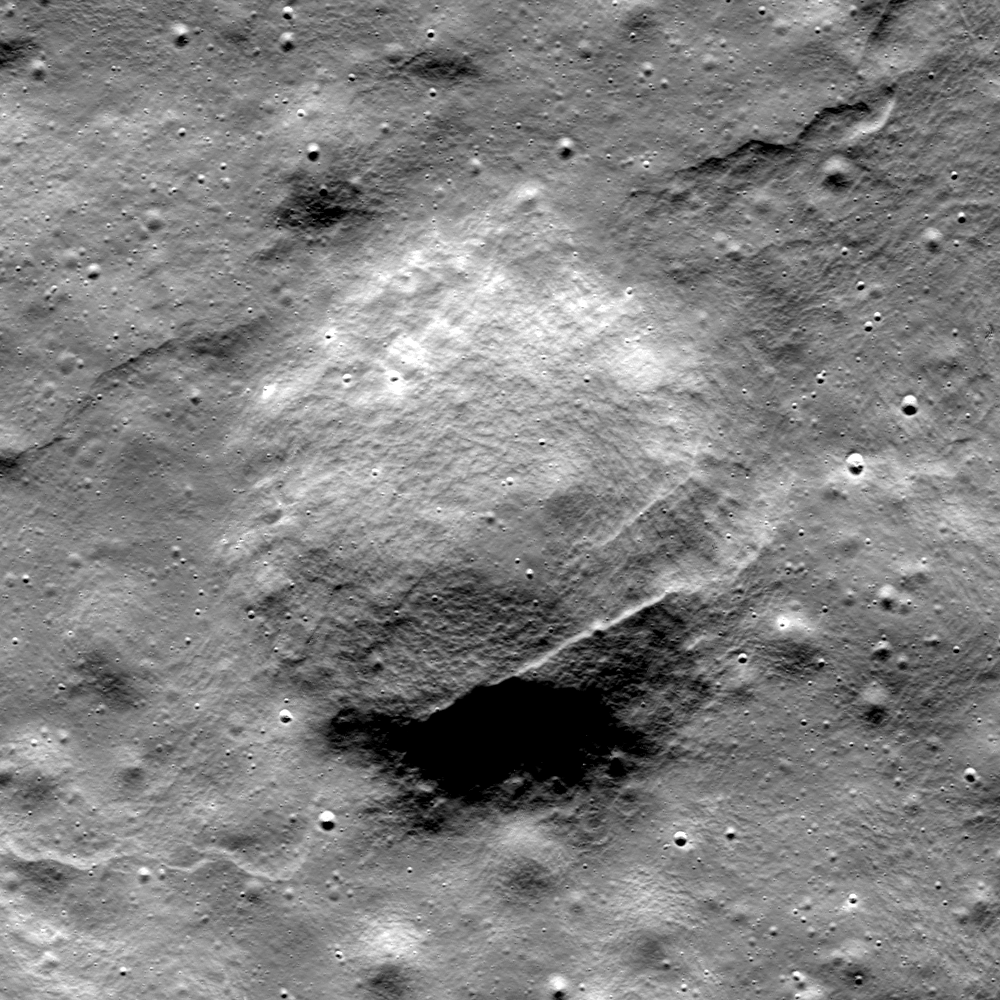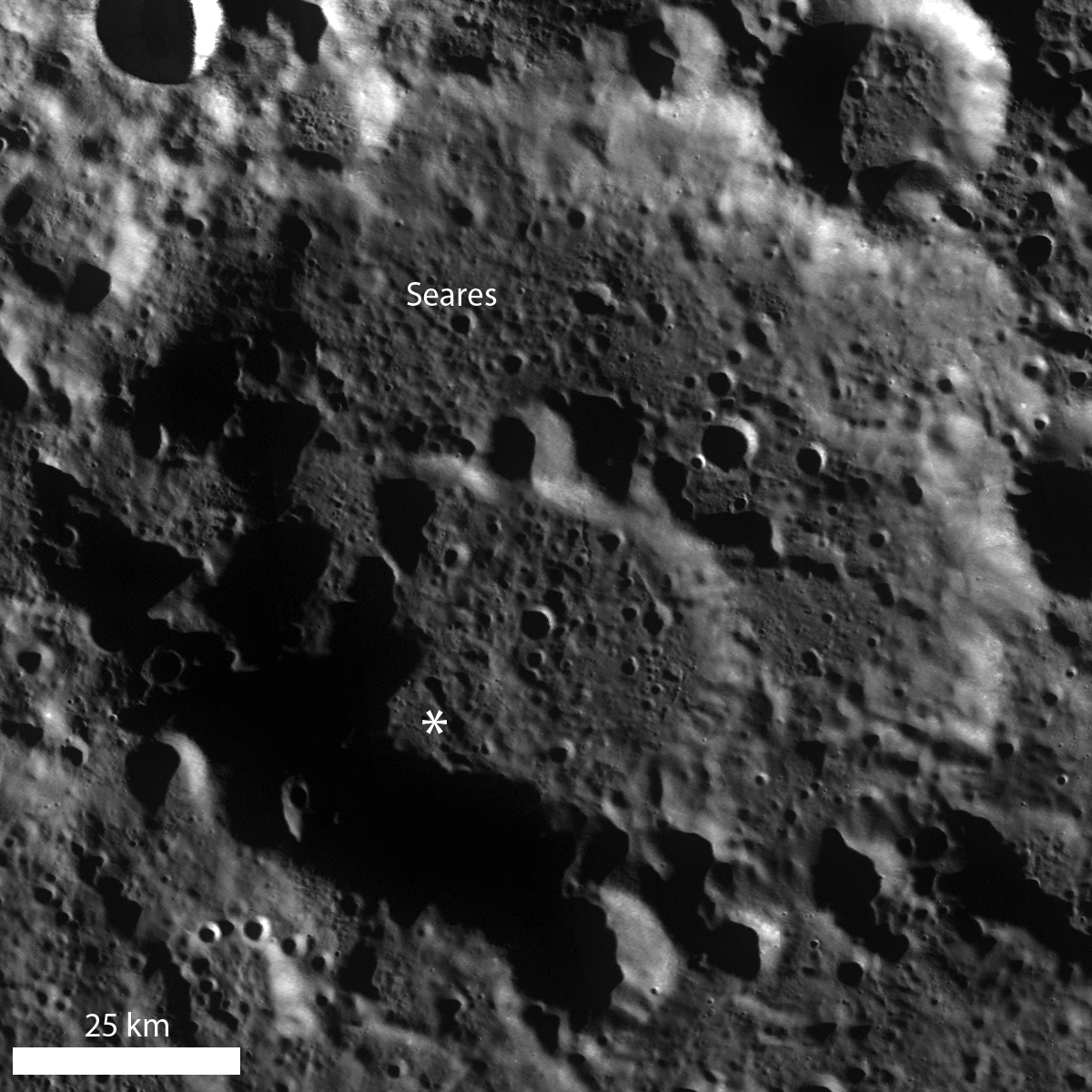
Lobate scarps, found almost only in the highlands, represent the surface expression of thrust faulting within the lunar crust. In the opening image, several segments of a lobate scarp deformed the Seares crater (75.529°N, 146.385°E, ~105 km diameter) floor material, including an unnamed ~1.1 km crater (72.964°N, 144.897°E). Based on the northeast/southwest trend of the lobate scarp segments, this area was probably under compression in the approximate northwest to southeast direction (squeezed from top left toward bottom right), creating bulges on the surface and squishing the crater.
The squished crater is degraded, without a well-defined sharp rim, and it is difficult to determine with a quick glance just how much deformation occurred. Drawing a best-fit circle around the probable rim of the crater to use as a guide for multiple measurements of crater diameter is one way to estimate the amount of crater deformation. Using this method, the crater diameter is ~1.06 km if the measurement is based on a circle fitting the rim in the east-west direction, while a fit based on the north-south direction provides a diameter of ~1.13 km. Furthermore, the crater shape is somewhat square, which may indicate that this region was affected by ancient episodes of faulting - perhaps resulting from the Seares crater impact formation - that affected today's crater formation, similar to the structural influences that influenced the formation of Meteor Crater.
Put your eyes to the test! Can you find other cross cutting relationships involving the lobate scarp segments in the full NAC image?
Related Posts:
Scarps in Schrödinger
Relative age relationships
Simpelius Scarp
Offset Crater, Active Moon
Published by Lillian Ostrach on 11 April 2013
